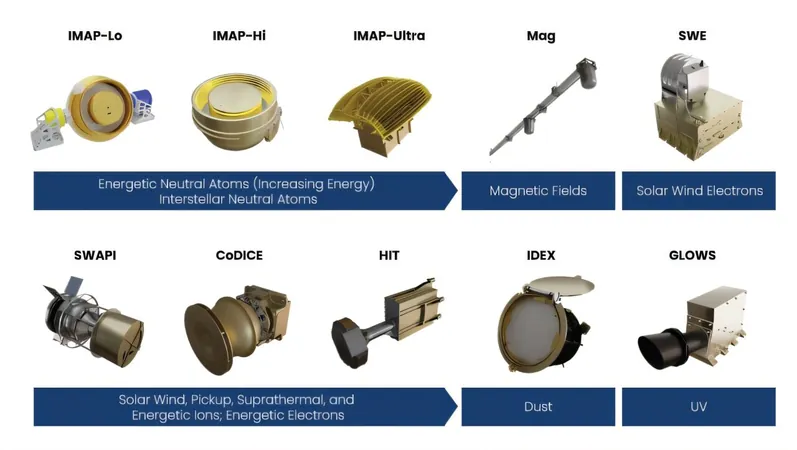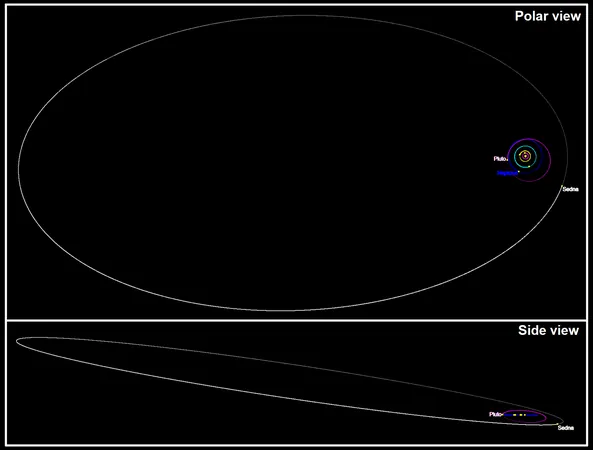
NASA Completes Installation of Groundbreaking IMAP Instruments: What’s Next for This Unprecedented Space Mission?
2025-01-17
Author: Yu
NASA Completes Installation of Groundbreaking IMAP Instruments: What’s Next for This Unprecedented Space Mission?
On January 17, 2025, NASA announced an outstanding milestone in space science: the completion of all instruments for the Interstellar Mapping and Acceleration Probe (IMAP), ahead of its scheduled launch in September 2025. This innovative mission aims to provide unprecedented insights into the solar wind and its interactions with interstellar space.
The final component, a charged particle detector, was installed on December 3, 2024, marking the integration of 10 sophisticated science instruments crafted by leading organizations globally. Positioned at Lagrange point 1, one million miles from Earth and towards the sun, IMAP will serve as an advanced satellite that measures and analyzes the solar wind—streams of charged particles emitted by the sun.
IMAP's primary goal is to effectively map the edges of the heliosphere, which is the vast bubble of solar particles that envelops our solar system. By doing so, IMAP aims to answer significant questions in heliophysics, particularly concerning the acceleration of charged particles and their subsequent journey into interstellar space.
Each instrument aboard IMAP has a unique role:
1. **Interstellar Dust Experiment (IDEX)** – Analyzes interstellar dust particles to understand their composition.
2. **IMAP Magnetometer (MAG)** – Measures the magnetic fields in the vicinity of the spacecraft.
3. **IMAP-Ultra** – Captures images of energetic neutral atoms (ENA) in high-energy ranges.
4. **High-energy Ion Telescope (HIT)** – Designed to measure high-energy ions from the solar wind.
5. **Solar Wind Electron (SWE)** – Maps electrons from the solar wind in three dimensions.
6. **GLObal Solar Wind Structure (GLOWS)** – Investigates the solar wind's time evolution using ultraviolet measurements.
7. **Solar Wind and Pickup Ion (SWAPI)** – Studies ions both from the solar wind and beyond.
8. **IMAP-Hi and IMAP-Lo** – Two separate ENA imagers focusing on medium and low-energy ranges.
9. **Compact Dual Ion Composition Experiment (CoDICE)** – Measures the distributions of interstellar pickup ions.
As the spacecraft prepares for launch, it is undergoing rigorous testing, including simulations of the hostile conditions it will encounter post-launch. This includes vibration and separation shock tests to ensure that IMAP can endure the challenges of space travel.
With the successful integration of its instruments, IMAP is on the brink of becoming a cutting-edge celestial cartographer. It promises to enhance our understanding of space weather significantly and equip scientists with near-real-time data to better predict solar storms that could affect satellite communications and power grids on Earth.
This ambitious space mission is a collaborative effort that not only exemplifies NASA's commitment to advancing space exploration but also represents a significant international partnership harnessing expertise from institutions like Imperial College London, Princeton University, and the Polish Academy of Sciences.
Stay tuned as IMAP takes off on its journey, promising to unlock the mysteries of the universe like never before!



 Brasil (PT)
Brasil (PT)
 Canada (EN)
Canada (EN)
 Chile (ES)
Chile (ES)
 Česko (CS)
Česko (CS)
 대한민국 (KO)
대한민국 (KO)
 España (ES)
España (ES)
 France (FR)
France (FR)
 Hong Kong (EN)
Hong Kong (EN)
 Italia (IT)
Italia (IT)
 日本 (JA)
日本 (JA)
 Magyarország (HU)
Magyarország (HU)
 Norge (NO)
Norge (NO)
 Polska (PL)
Polska (PL)
 Schweiz (DE)
Schweiz (DE)
 Singapore (EN)
Singapore (EN)
 Sverige (SV)
Sverige (SV)
 Suomi (FI)
Suomi (FI)
 Türkiye (TR)
Türkiye (TR)
 الإمارات العربية المتحدة (AR)
الإمارات العربية المتحدة (AR)